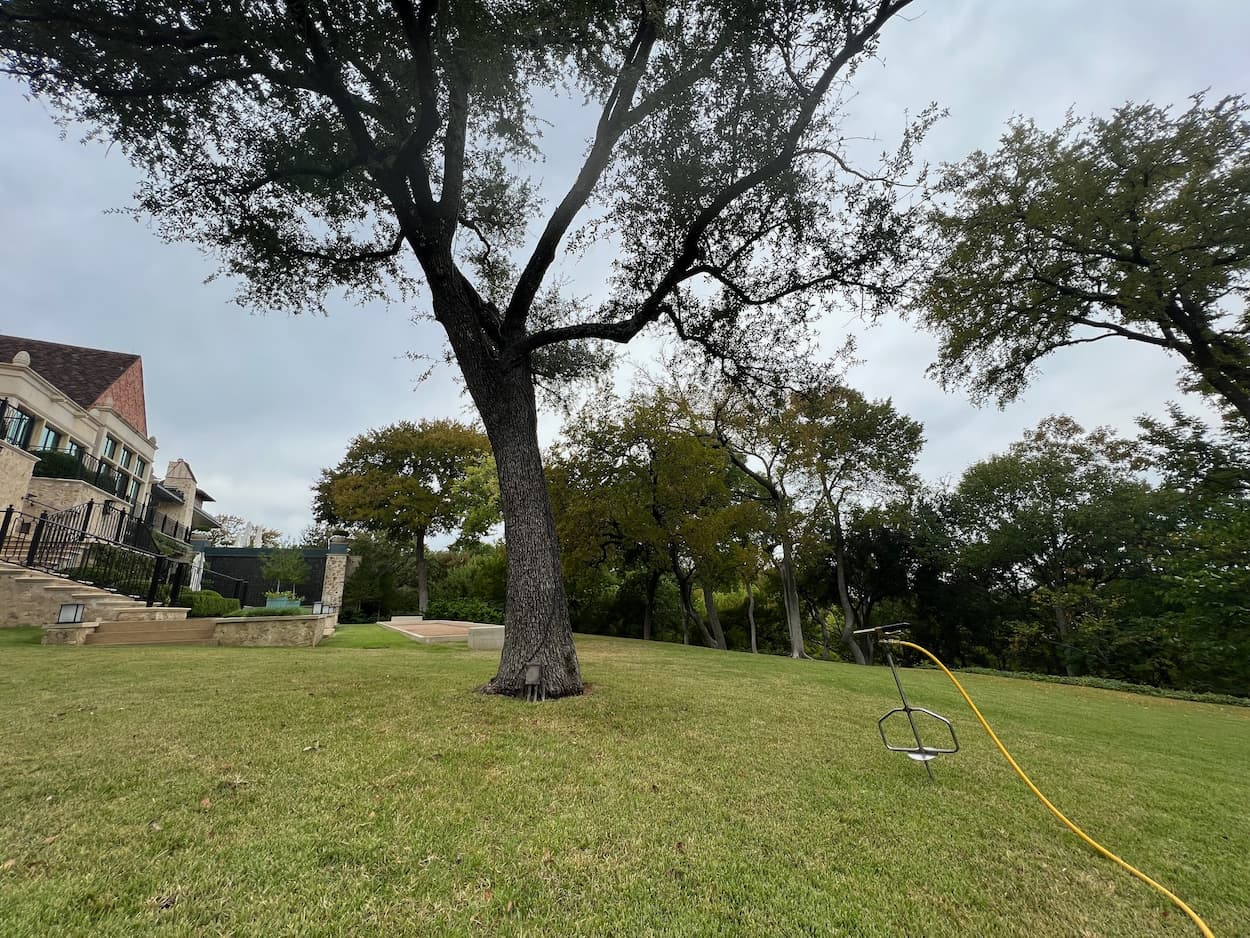Texas Shrubs & Tree Health Care Experts
Caring For Texas Shrubs & Trees Since 1990 Get A Free QuoteCall (817) 880-6130Tree & Shrub Pest Treatment Services in North Richland Hills, TX
Our ISA Certified Arborist Can Help Treat Your Trees and Shrubs From Pests in North Richland Hills, TX.
Arborist USA provides Tree & Shrub Pest Treatment Services in North Richland Hills, Texas, and the surrounding areas.
North Richland Hills, TX, known for its lush tree-lined streets and areas of natural beauty, requires ongoing dedication to preserve its landscape, especially in terms of tree and shrub pest treatments. An array of pests may plague this green space, requiring keen observation and appropriate treatment measures.
To sum up, preserving the rich, green panorama of North Richland Hills, TX necessitates a proactive and comprehensive approach towards tree and shrub pest treatments. This can be accomplished through a balanced mix of expedient treatments, preventive measures, professional engagement, and community participation. With persistent efforts and a well-rounded, environmentally conscious pest management approach, we can ensure a thriving, pest-free green landscape, safeguarding North Richland Hills’ scenic appeal for future generations.
If you are in need of Tree & Shrub Pest Treatment Services in North Richland Hills, TX, please get in touch with Arborist USA today by calling us at (817) 880-6130, your Tree & Shrub Disease Specialist.
Signs of a Sick Tree or Sick Shrub
- Dead Branches
- Yellowing Leaves
- Fungi or Decay
- Bark Falling Off
- Discolored or Rusted Leaves
- Dying Tree or Shrub
- Leaf Discoloration
- Root or Insect Damage
- Leaves look like they’re being eaten
- Bark is Peeling
- Holes in leaves
- Holes on Bark or Branches
- Stunted Growth
- Canopy Dieback
- Bark Abnormalities
- Wilting
Tree & Shrub Helpful Tips
1. Swift Pest Recognition:
Rapid identification of pests, including aphids, beetles, mites, caterpillars, borers, or scale insects, is pivotal in mitigating the damage they can inflict on North Richland Hills’ verdant environment.
2. Identifying Infestations:
Recognizing early signs of infestations, such as abnormal growth patterns, discoloration of leaves, premature leaf loss, or bark anomalies, is key in enabling timely treatment.
3. Prompt Treatment:
Immediate treatment of infested vegetation can reduce plant damage and curb the spread to other plants, ultimately saving valuable green resources and unnecessary costs.
4. Professional Intervention:
Professionals in tree and shrub care are adept at fast pest identification, formulating suitable treatment measures, and provide regular monitoring that shapes effective, adaptive pest management strategies, subsequently contributing to the preservation of North Richland Hills’ green legacy.
5. Variable Treatment Approaches:
Depending on the pest nature and infestation level, different treatment methods might be employed, from biological and chemical control to physical responses such as pruning or advanced cultivation techniques.
6. Protection Through Prevention:
Preventive practices such as regular pruning, appropriate watering, and balanced fertilization can shun pest aggressors. Encouraging biodiversity also plays a pivotal role in strengthening the ecosystem’s innate resistance to pest invasions.
7. Integrated Pest Management (IPM):
The uptake of an IPM strategy that fuses multiple, environmentally sensitive pest control tactics can ensure more comprehensive and efficient treatment outcomes.
8. Ecosystem Balance:
While battling pests is vital, maintaining equilibrium in the local ecology, including beneficial insects and wildlife, is equally important. Expert pest management services embody this critical balance.
9. Role of the Community:
Active community participation in identifying, preventing, and managing pest infestations uplifts the efficacy of pest control measures, collectively shielding North Richland Hills’ green spaces.
10. Promotion of Awareness:
Disseminating information about different pests, their indicators, treatment options, and prevention strategies among North Richland Hills’ residents assists in empowering everyone to effectively participate in pest control.
If you’re concerned or have any further questions about our Tree & Shrub Pest Treatment Services in North Richland Hills, TX, or surrounding areas in North Texas, please call us at (817) 880-6130.
Tree & Shrub Pests
Listed below are common Tree & Shrub Pests found in Texas.
Aphids
A white soft body insect that creates a sticky "honey dew" structure on limbs or leaves, blocking nutrients.
Bagworms
Bagworms lay eggs that create small cone-shaped structures less than three inches in length.
Beetles
An invasive wood borer that is subject in all wood tissue that causes severe decline in trees health.
Gypsy Moth
A larva that boars into leaf structure that cause lesser of a foliation and decline in overall leaf structure.
Oak Gall
A growth deformity known as a "gall" commonly occur on oak trees subject to branches and other structures.
Termites
Termites, wood-destroying insect, eats away at all wood tissue, damaging the structures of the trees.
Twig Girdlers
Being a member of the long-horned beetle family, these girdlers are known to eat leaf and other tree areas.
Webworms
These caterpillars spin white webbing bag nests in tree branches and eat your tree foliage (leaves).
Certifications




Our Reviews

A+ BBB Rating based on 31 BBB Reviews
4.8/5.0 based on 83 Top Rated Local Reviews
4.6/5.0 based on 36 Facebook Reviews
4.0/5.0 based on 4 Trust Pilot Reviews

4.9/5.0 based on 90 Google Reviews
4.5/5.0 based on 13 Yelp Reviews
29 Recommendations on Nextdoor
Total Reviews: 286 ![]() Real Customer Reviews
Real Customer Reviews







